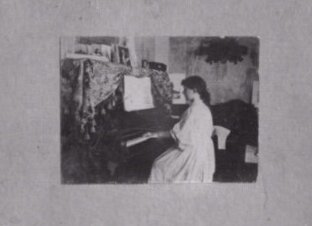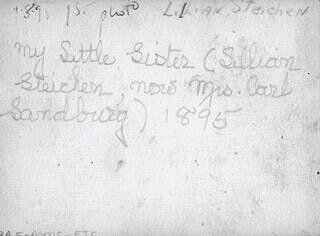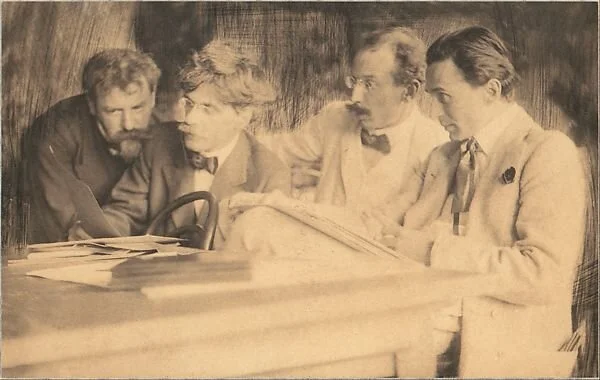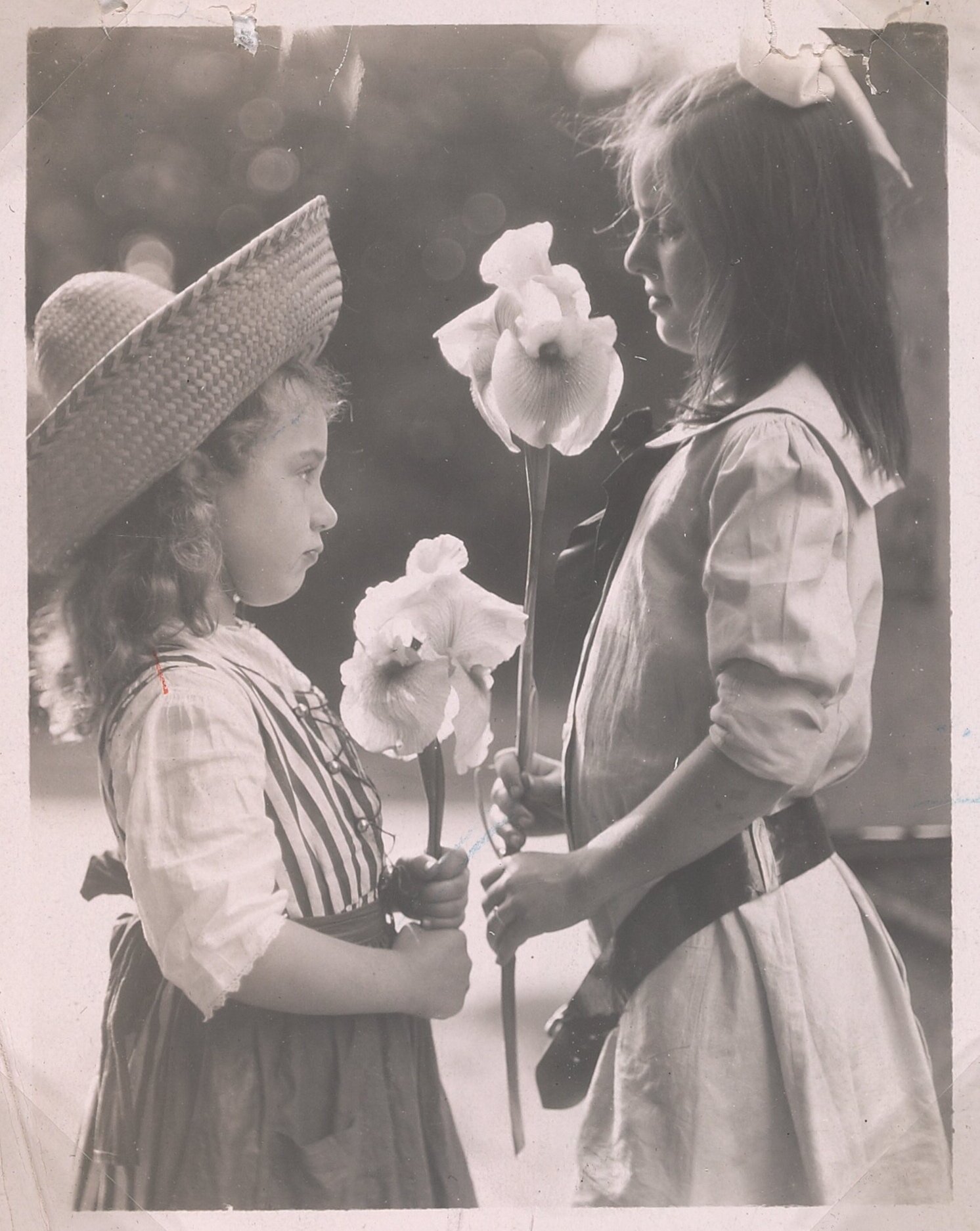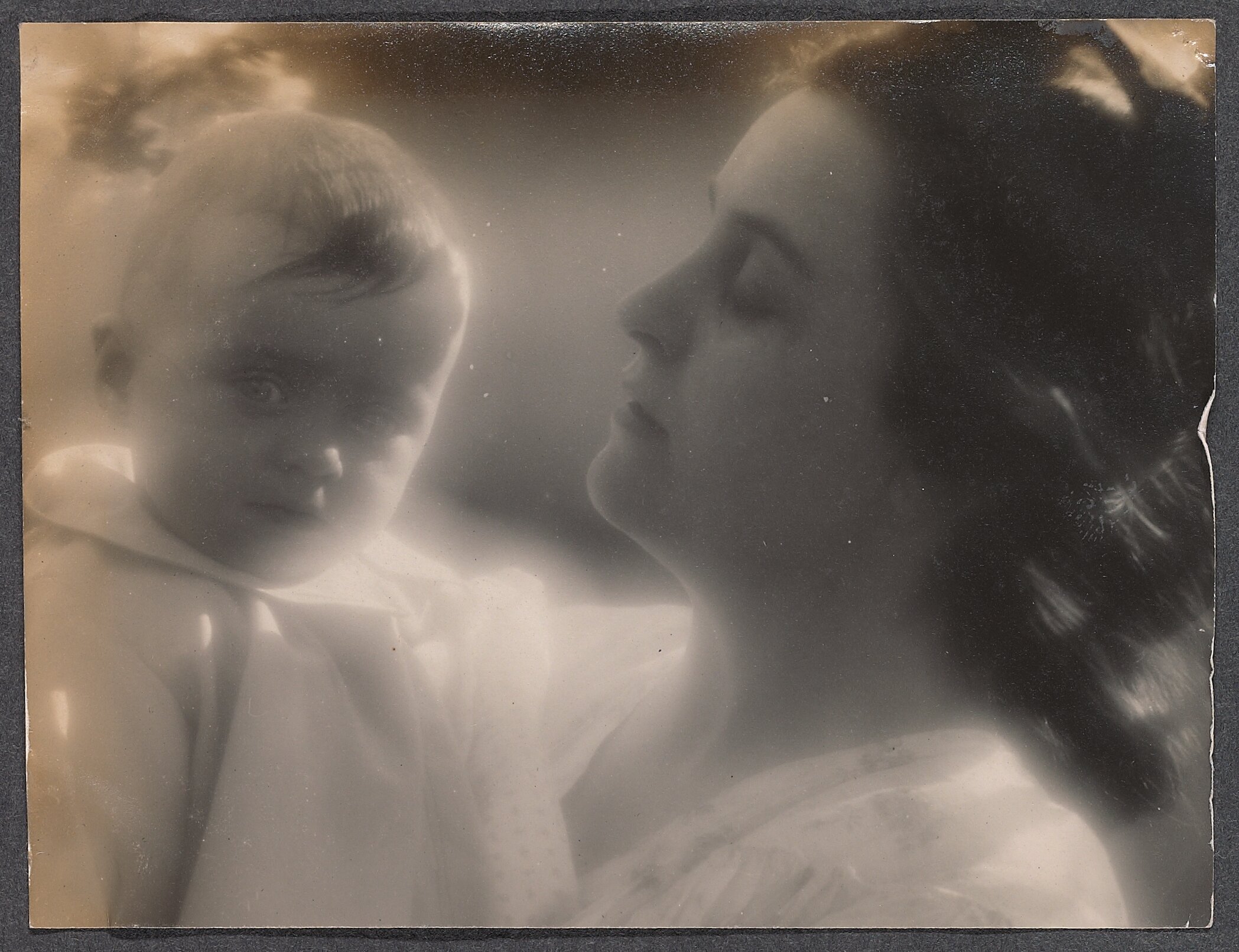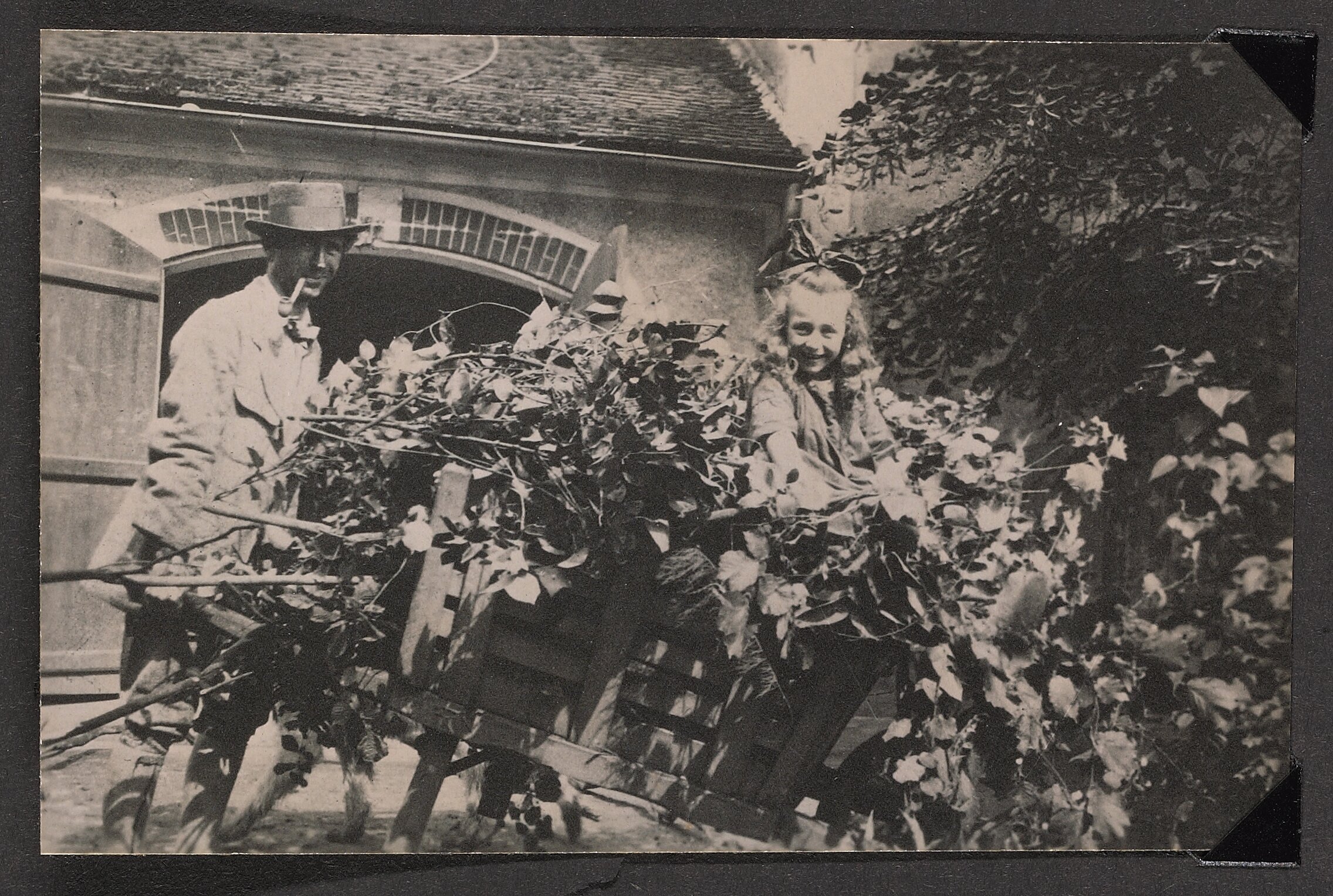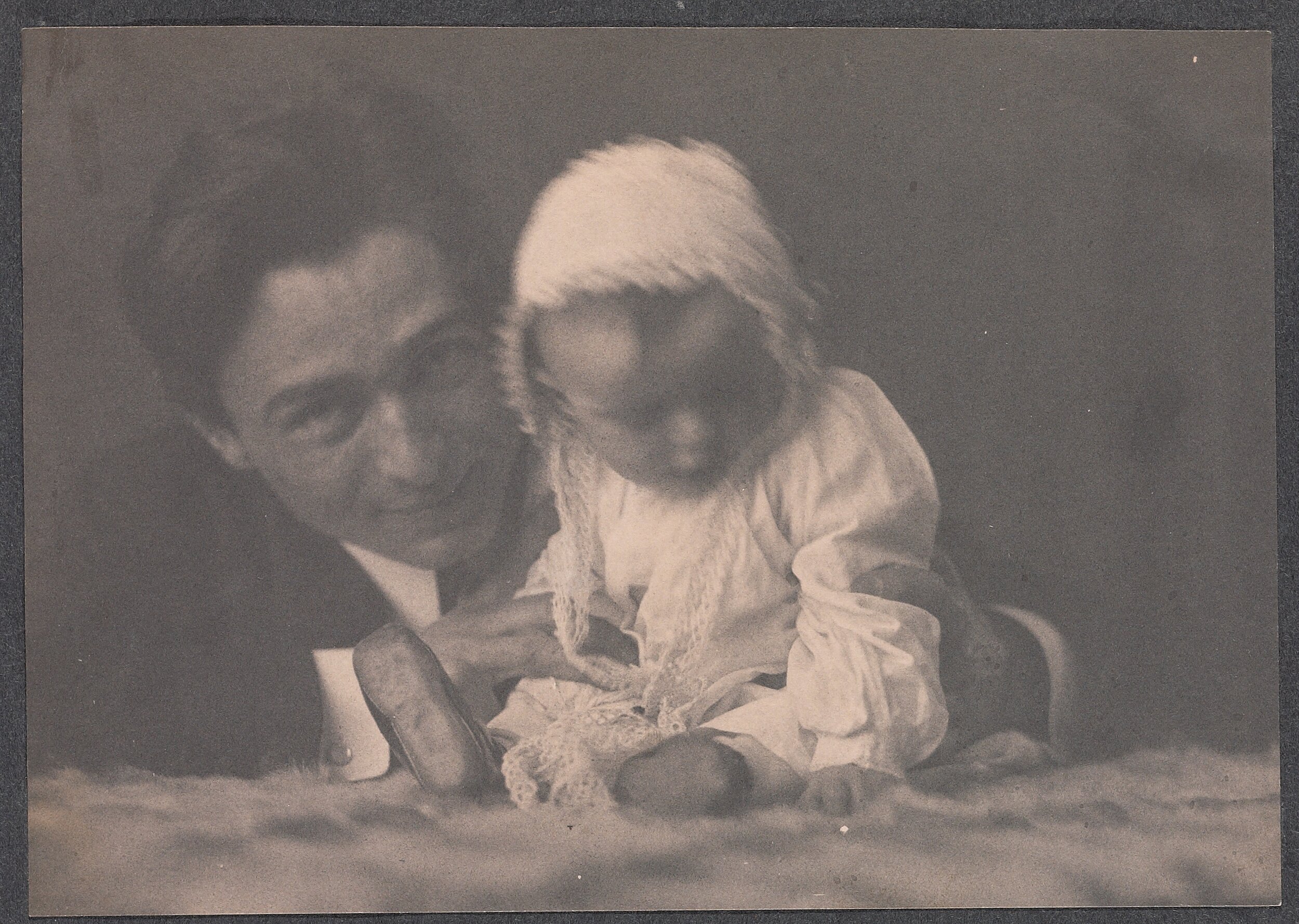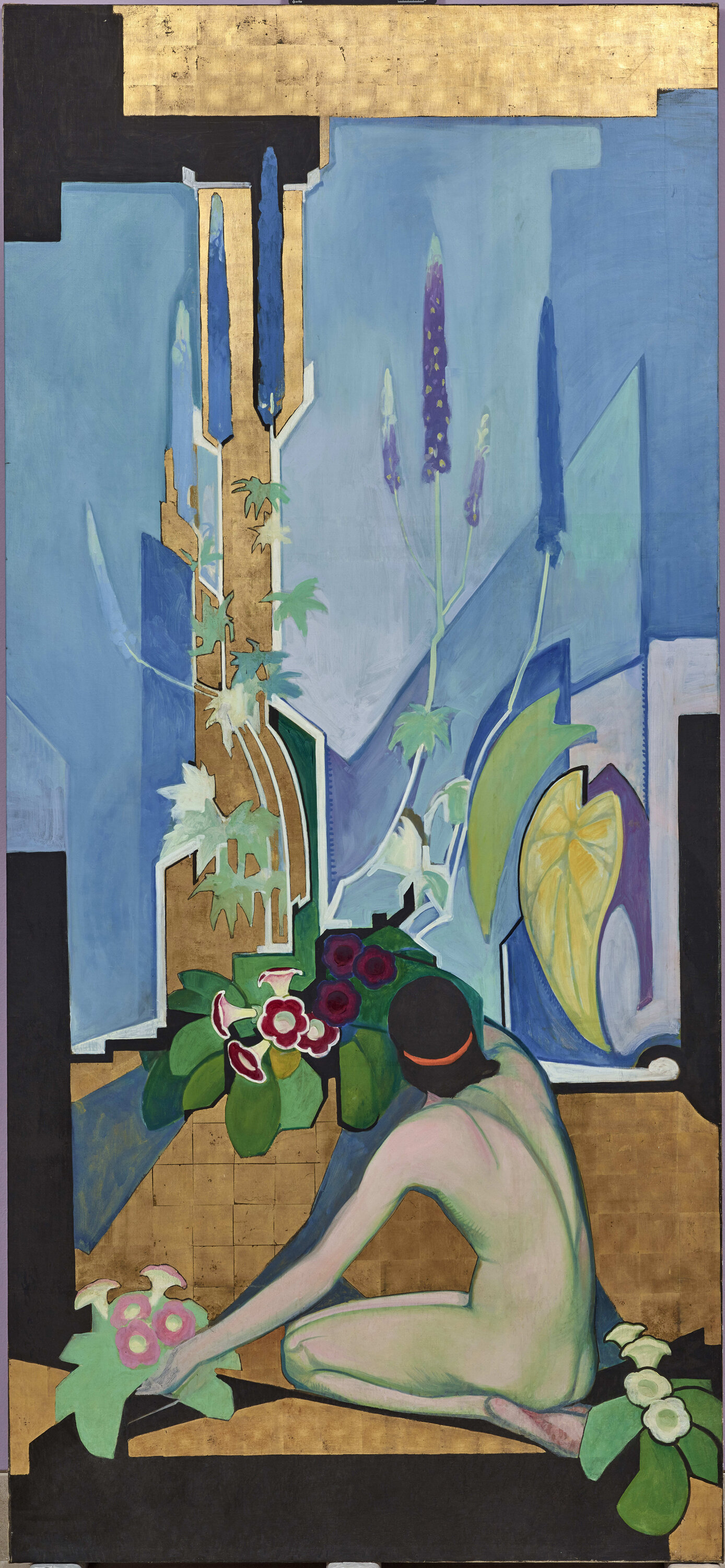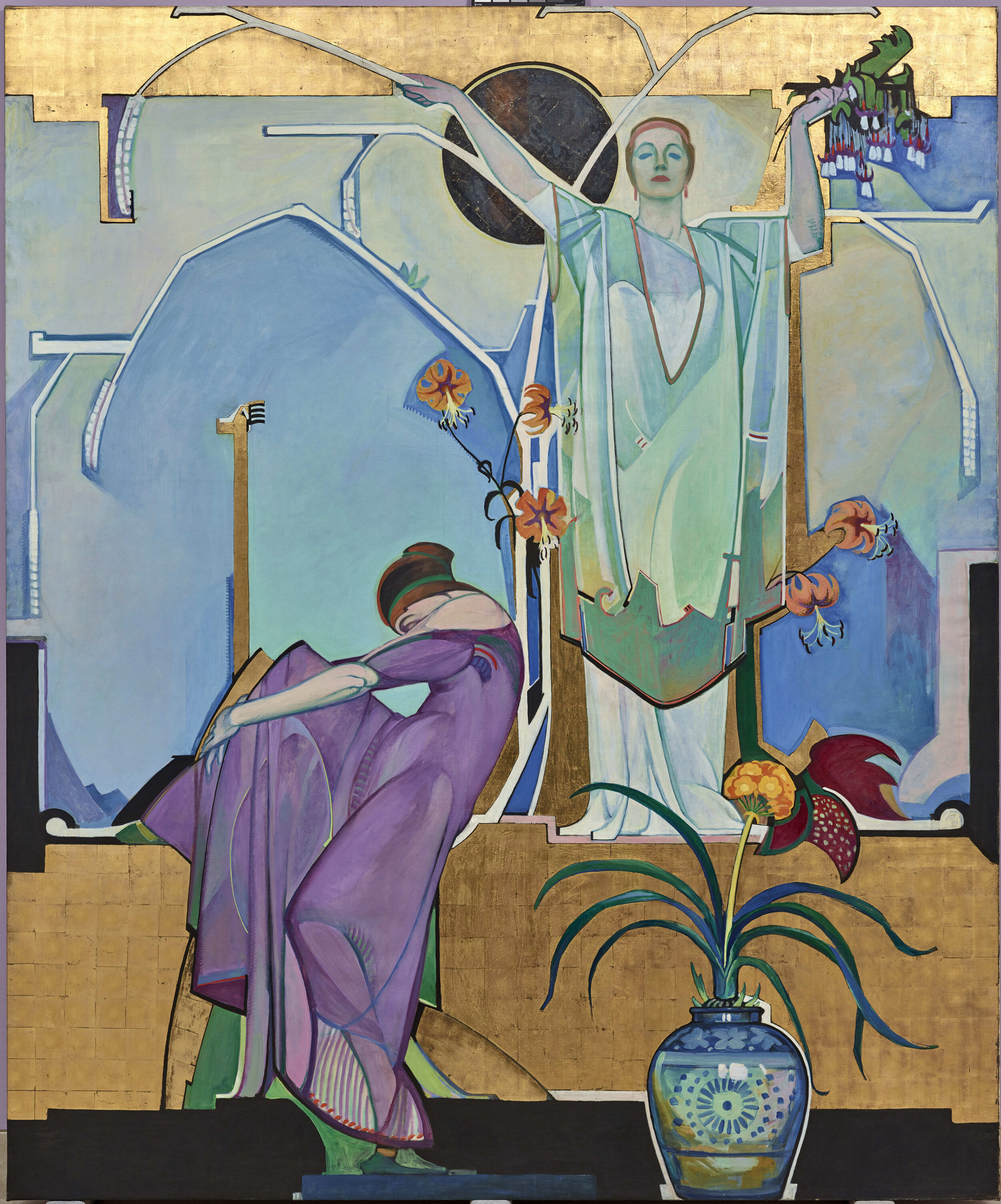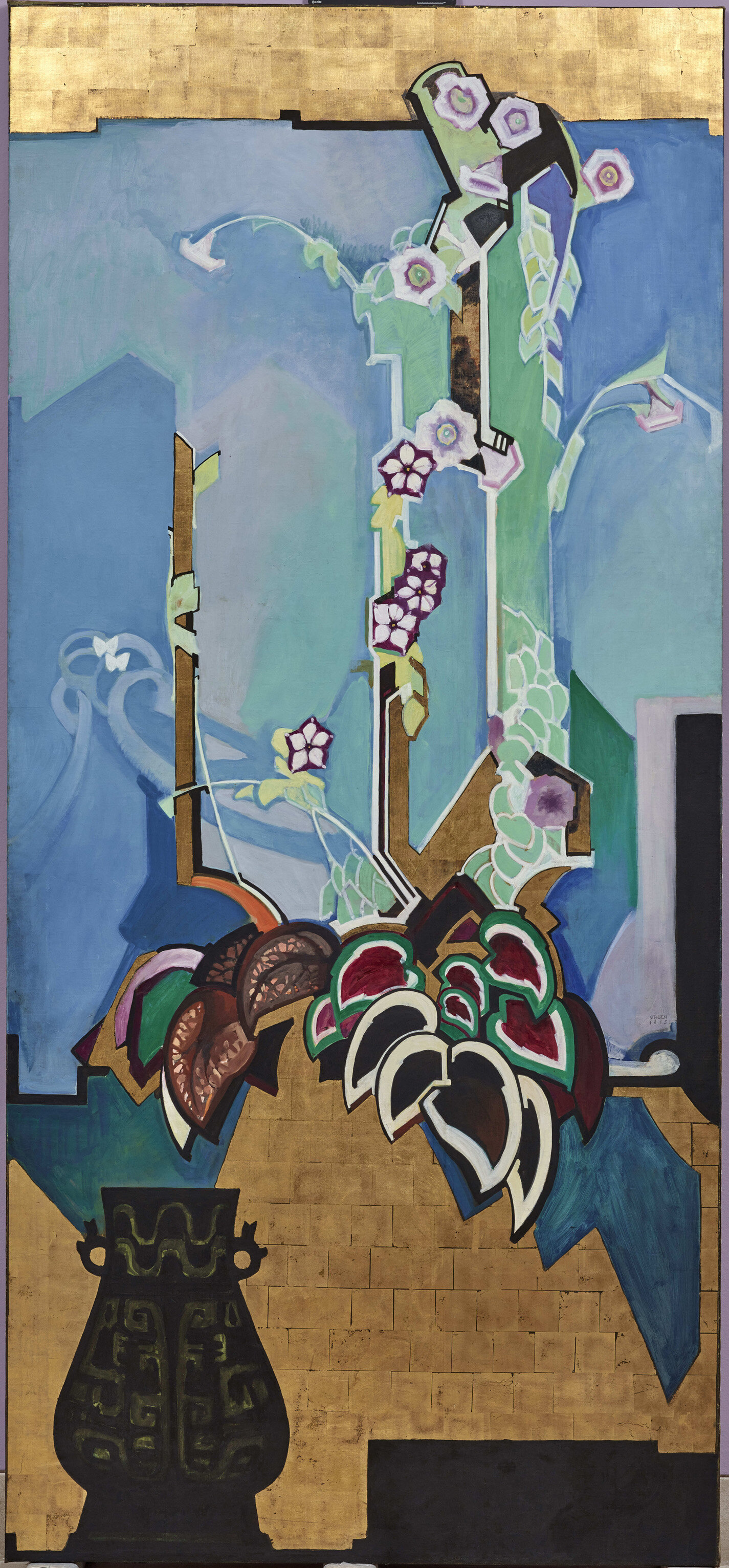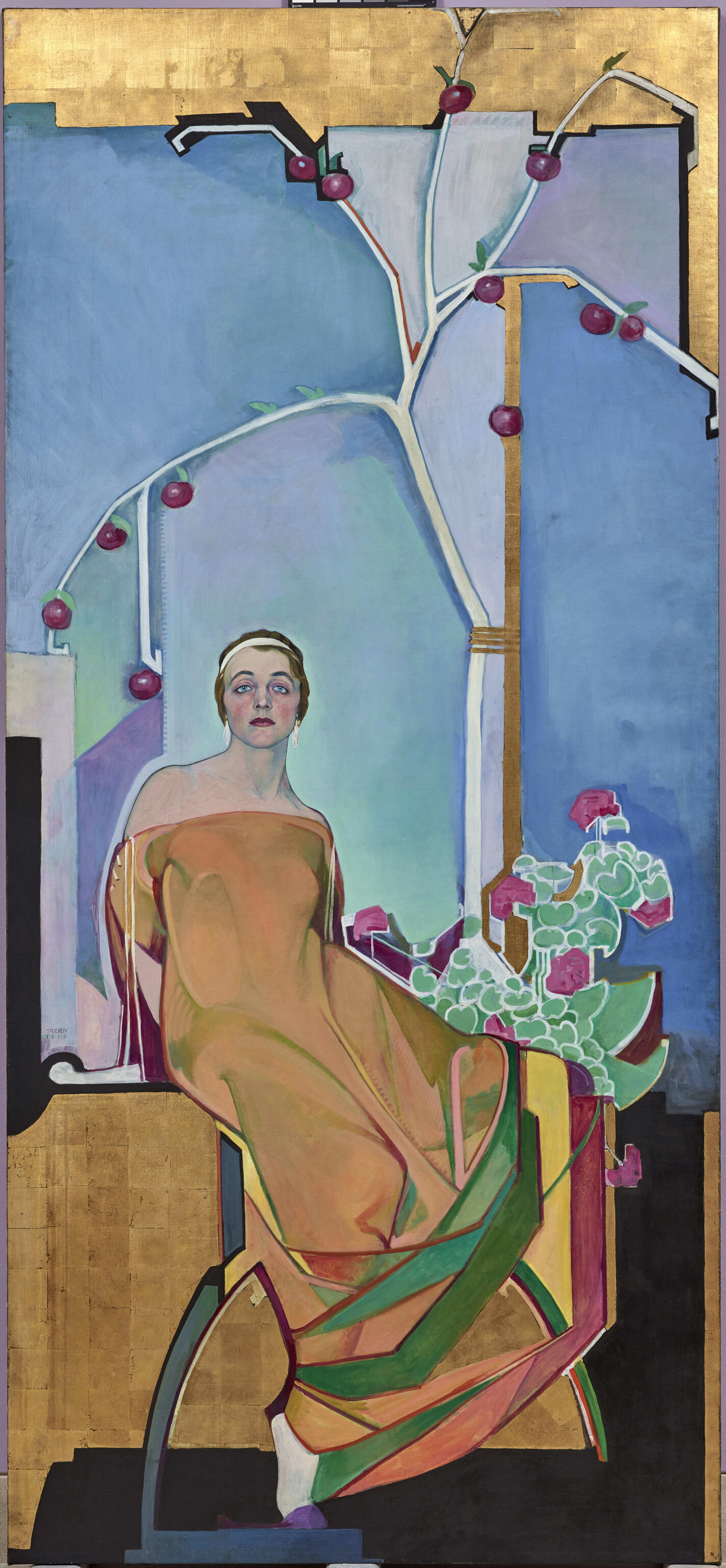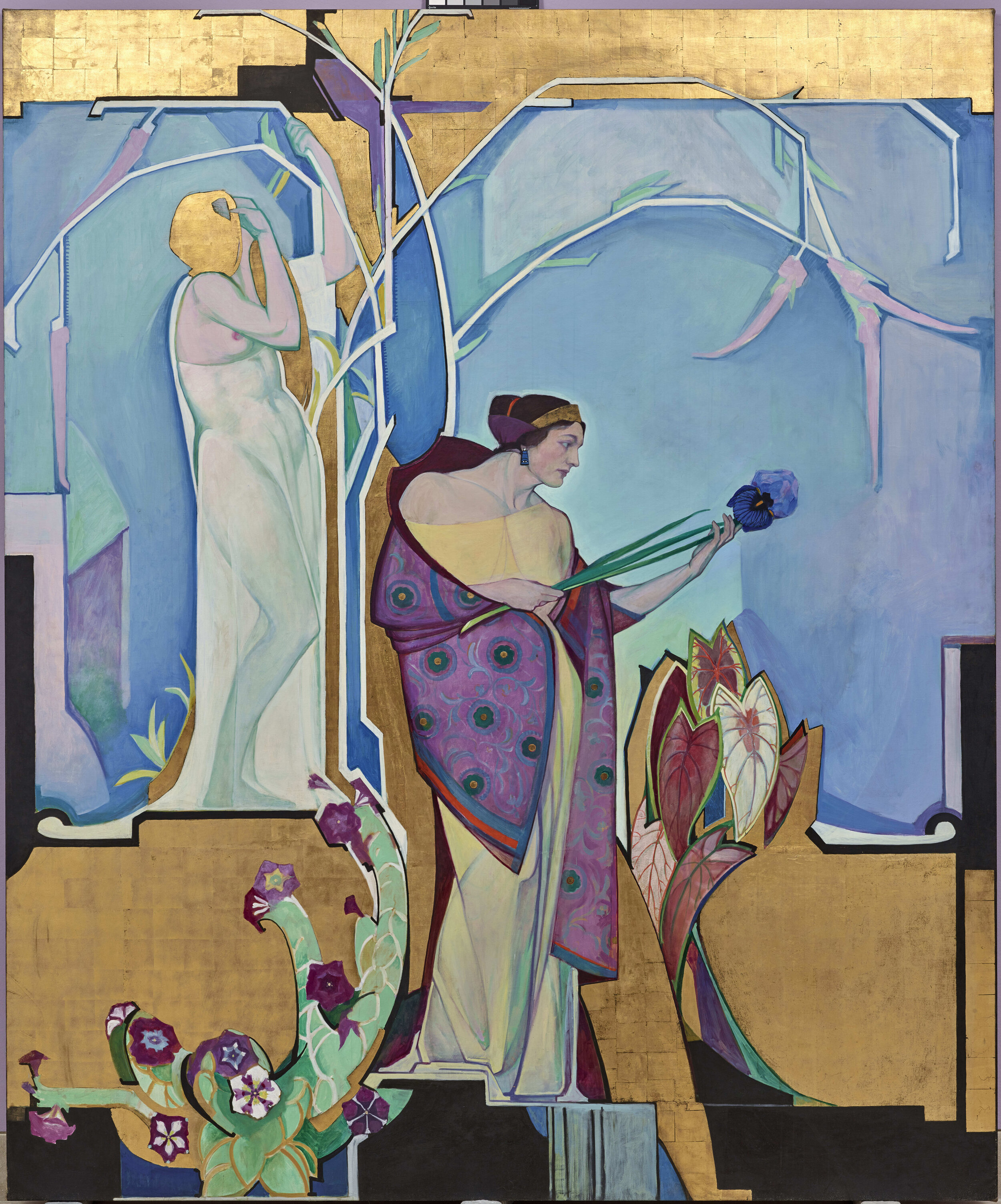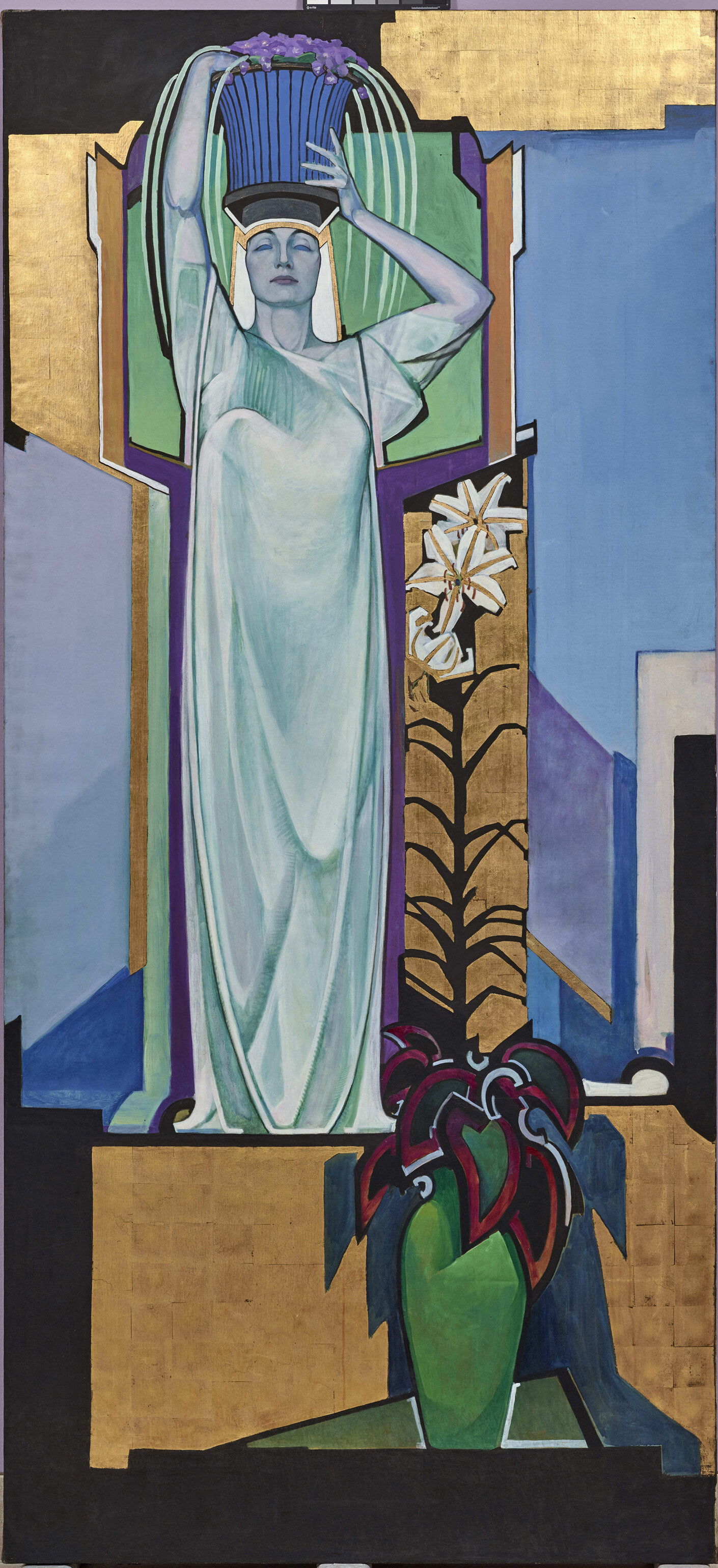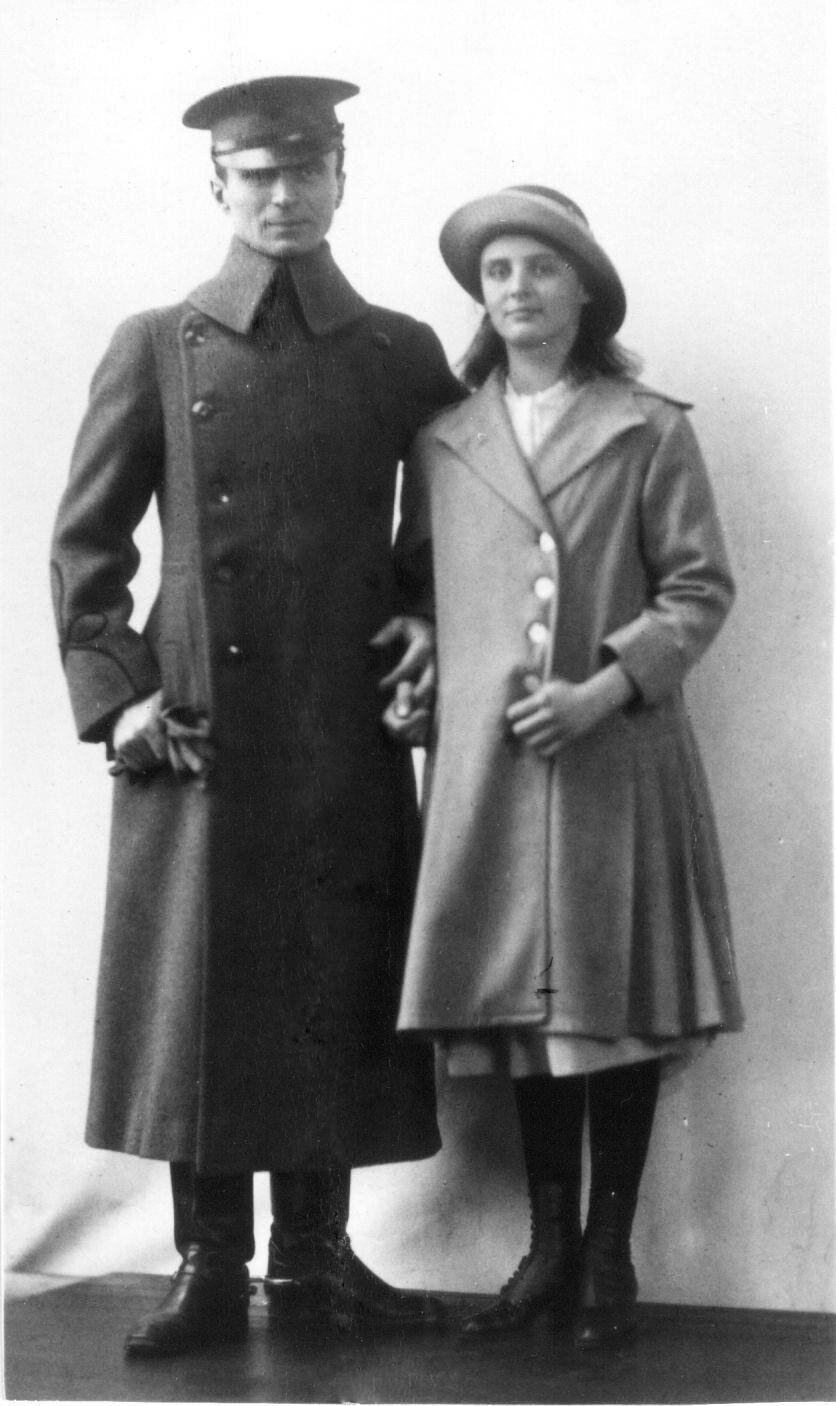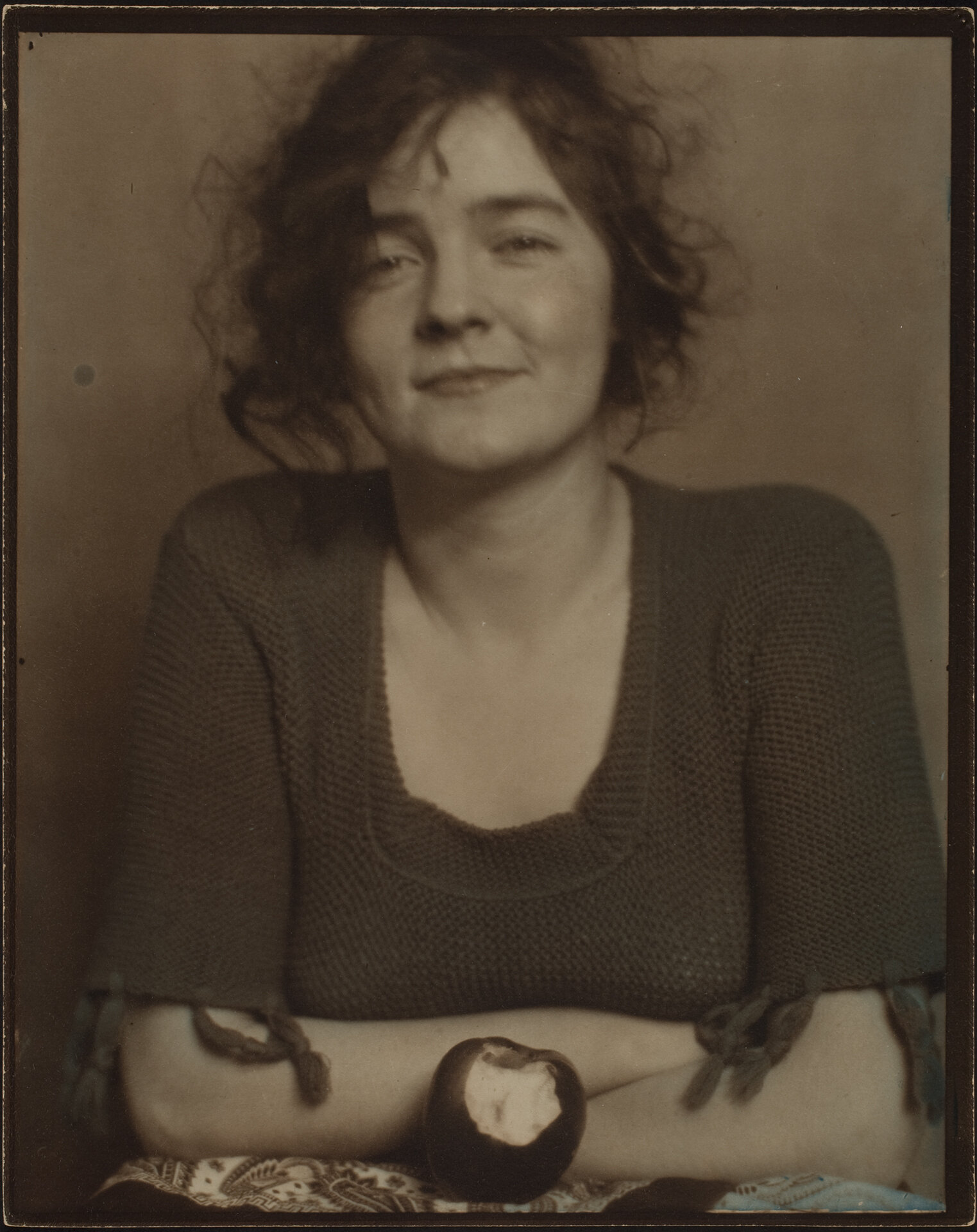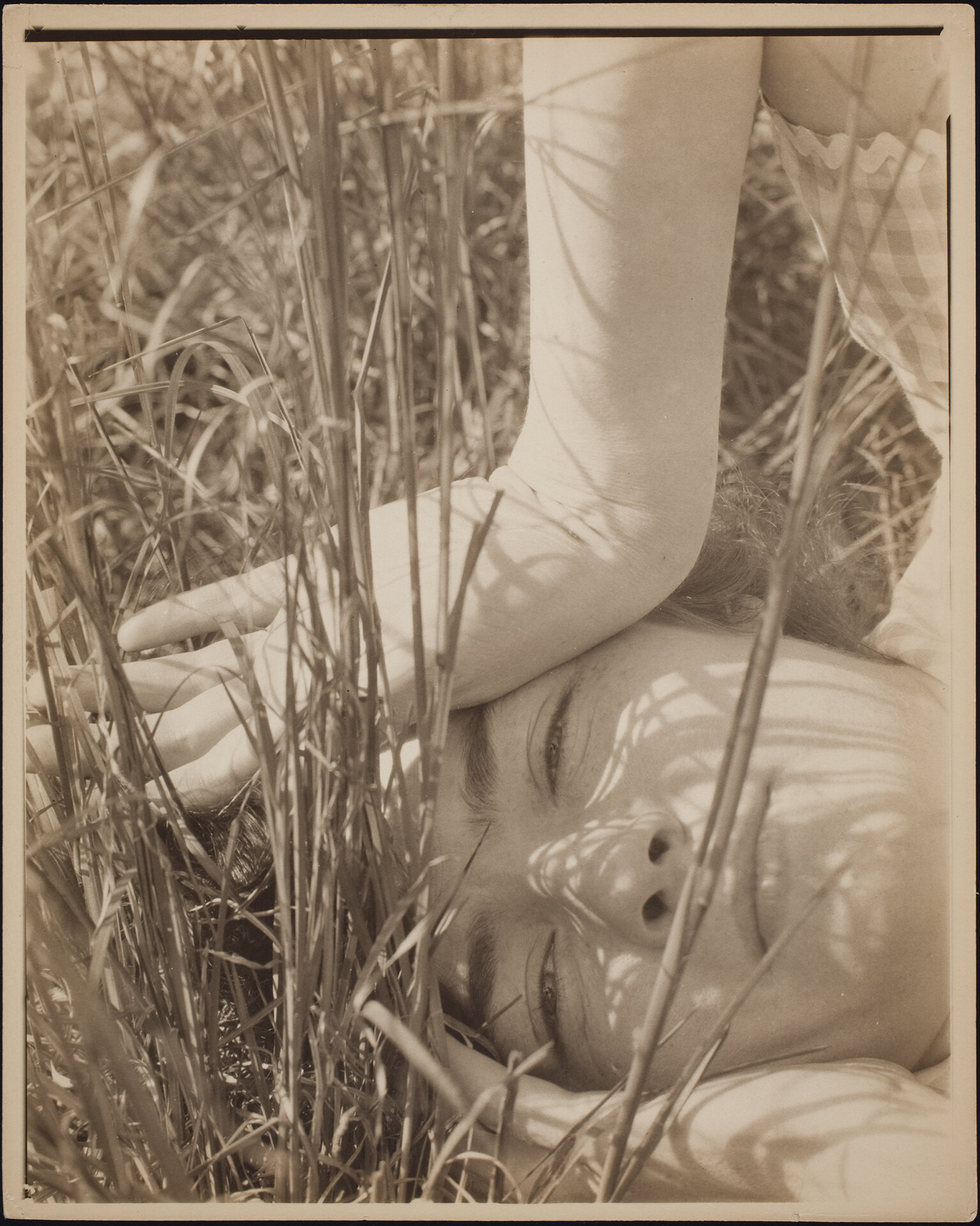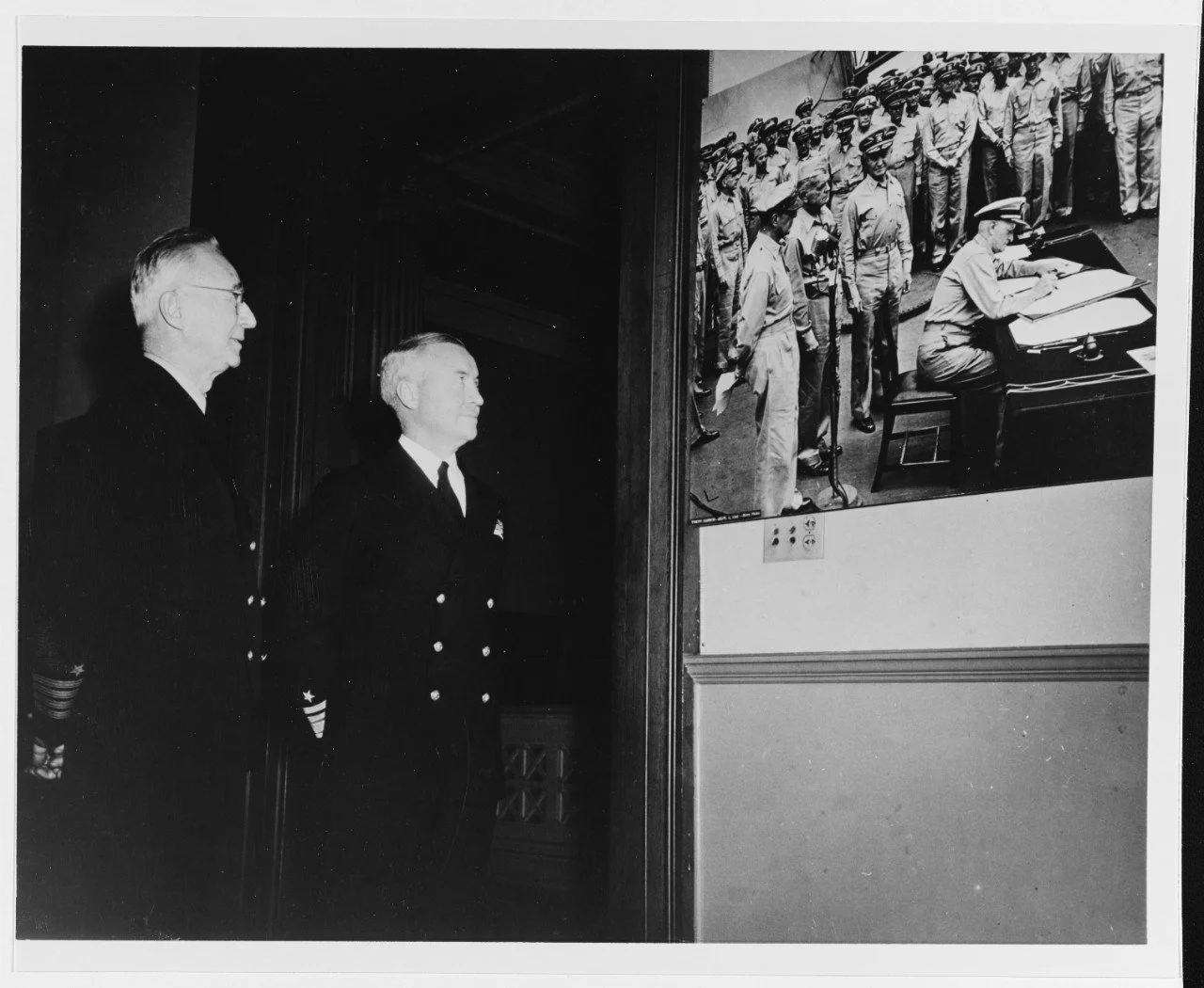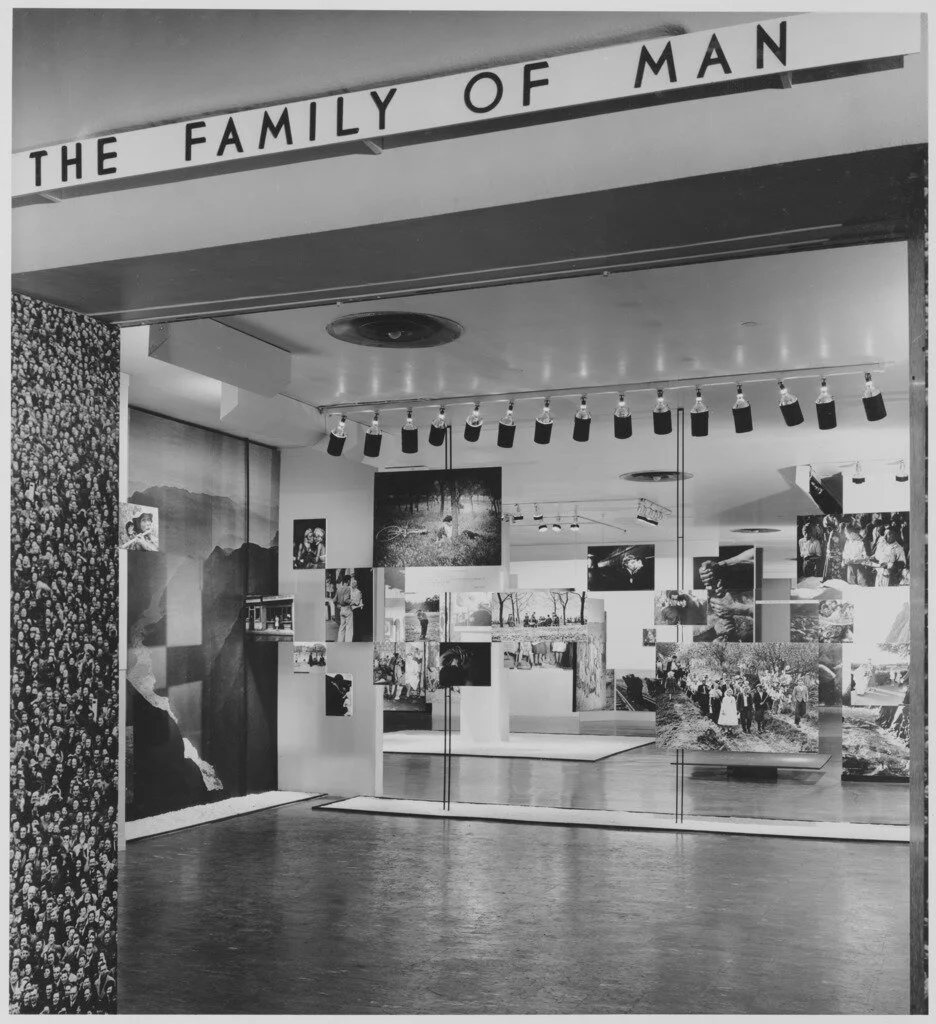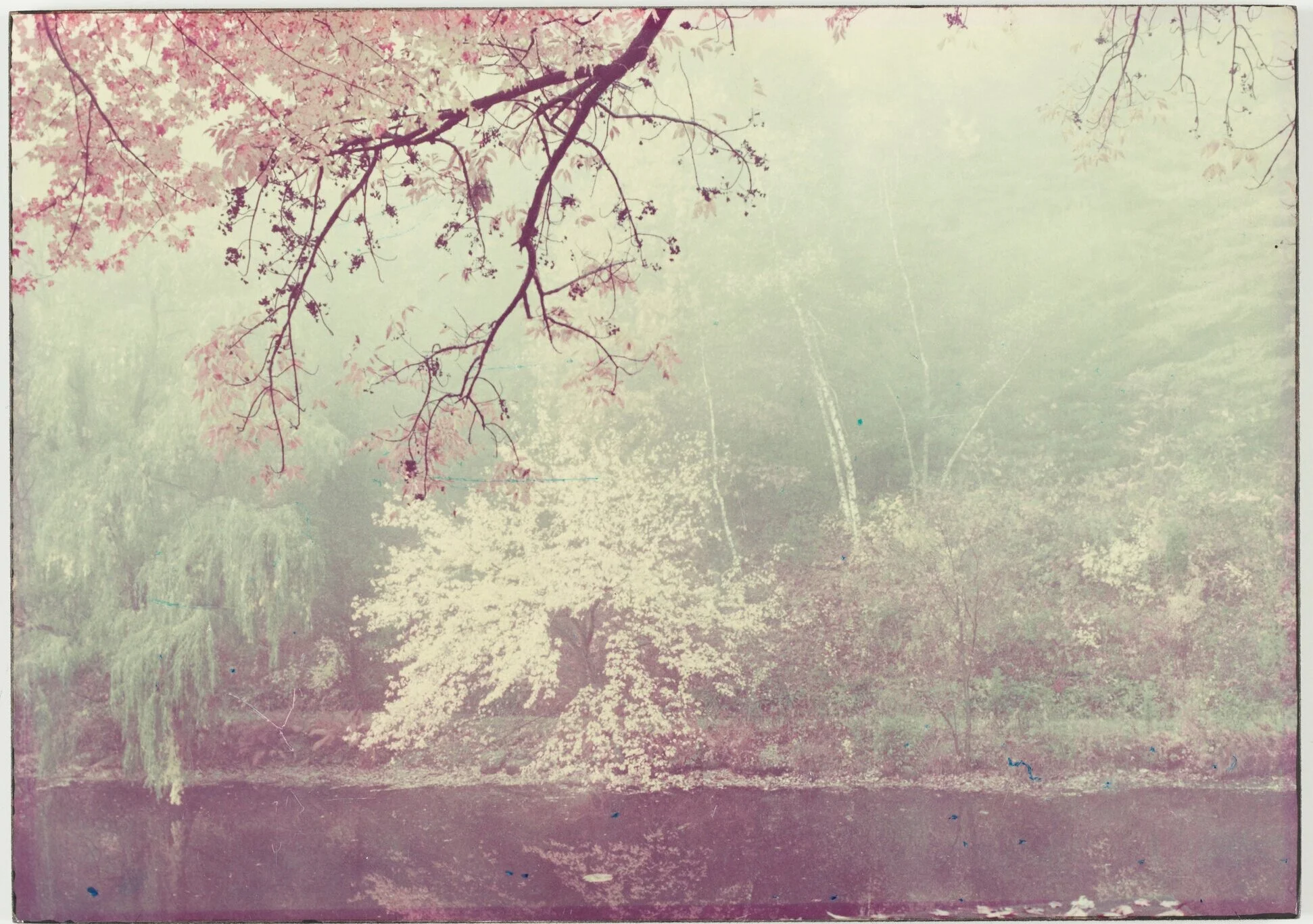Early Years
The Steichen family lived first in Hancock, Michigan where Steichen’s sister, Lilian Steichen, was born on May 1, 1883. By 1889, the parents had saved up enough money to move the family to Milwaukee. Steichen would live there, apprenticing as a lithography assistant in his early teens, until he left for Paris to study art in April 1900. Lilian would leave Milwaukee for advanced schooling, graduating with high honors from the University of Chicago in 1903. Her marriage to the poet Carl Sandburg in 1908 helped forge a life-long friendship and partnership between her brother and her husband.
Birth
Edward Steichen, baptised Éduard Jean Steichen, was born on March 27, 1879 in a small house in the village of Bivange in the Grand Duchy of Luxembourg. His parents, Jean Pierre Steichen and Marie Kemp Steichen, facing increasingly straitened circumstances and financial difficulties, decided to make a new start in a new land and emigrated to the United States of America when Steichen was eighteen months old. According to noted Steichen biographer, Penelope Niven, the Steichens were “part of a large exodus of Luxembourgers displaced in the late nineteenth century by worsening economic conditions.”
Above left: Original print of the first photograph Steichen ever took in 1895. Above right: On the photograph’s verso is Steichen's notation (misspelling his sister’s name with two ‘L’s instead of one). Images courtesy the Estate of Edward Steichen. © 2019 The Estate of Edward Steichen/Artists Rights Society (ARS), New York.
Frank Eugene. 1907. Stieglitz, Steichen, Smith and Kuehn Admiring the Work of Frank Eugene.
Early Career
Before Steichen left for Europe he spent time in New York, meeting and becoming friends with photographer Alfred Stieglitz. Stieglitz became an early mentor and the partnership between the two men would have profound repercussions on the field of photography in years to come. His support for Stieglitz's gallery "291" and his help with the design and layout of Camera Work is considered seminal.
Europe
In Europe, his time was marked by deepening friendships with many important artists of the day, and by his continuing to work both as a painter and a photographer. His inclusion in art and photographic exhibitions and his growing fame as the "enfant terrible" of the New American School of photographic art gained him some notoriety, and his meeting with sculptor Auguste Rodin, who took the young artist under his wing, provided him with a lifelong mentor and friend. According to author and art historian William A. Ewing, Steichen became one of the earliest "jet setters," constantly moving back and forth across the Atlantic by steamship, in the process cross-pollinating art from Europe to the United States, helping to define photography as an art form, and at the same time widening America's understanding of European art and art in general.
Edward Steichen. Self-portrait, 1903. Photogravure, printed from original 1901 negative. Digital image courtesy of the George Eastman Museum. © 2018 The Estate of Edward Steichen/Artists Rights Society (ARS), New York.
First Marriage
In 1903 Steichen married Clara Emma Smith, a young singer from Springfield, Missouri who was introduced to Steichen by photographer Gertrude Kasebier. That marriage produced two daughters: Mary Rose Steichen (Dr. Mary Calderone) born in New York on July 1, 1904, and Charlotte Kate Rodina Steichen, born in Paris on May 27, 1908. The family lived briefly in Paris but moved to a larger home in the small farming village of Voulangis. At the outbreak of World War I they were forced to leave their home abruptly and move back to the United States. The couple had a strained and unhappy marriage. Following a highly publicized court trial, they were divorced in 1922. Clara Steichen died in Paris in 1957.
In Exaltation of Flowers (1911-1914)
Seven large interconnected murals were created for the Meyer family for a home they never used. The large, gold-leafed murals are filled with portraits of Steichen's friends and their floral counterparts, making this project a particularly personal one for the artist. The murals spent many years in storage and are now owned by the Art Bridges Foundation, which conserved them and have made them available for display in several museums across the United States.
Image above left: Edward Steichen. In Exaltation of Flowers: Rose, Geranium. Above: Edward Steichen. In Exaltation of Flowers 1910-1914. Digital images Art Bridges. © 2019 The Estate of Edward Steichen/Artists Rights Society (ARS), New York.
World War I
Steichen settled his family back in the United States and then enlisted in the U. S. Signal Corps in 1917, transferring to the Air Service soon after. He headed up the Photographic Division in partnership with Major James Barnes. His work focused on the advancement of aerial photography and the organization and creation of standards such as uniform photographic plate size for all cameras used by British, French, and American photographic units, and the creation of small mobile photo labs that could be quickly deployed close to various war zones. At the end of the war he was awarded the Legion of Honor by the French government.
Images: Steichen in WWI uniform with daughter Mary. The Estate of Edward Steichen © 2019 The Estate of Edward Steichen/Artists Rights Society (ARS), New York. Captain Edward Steichen and camera, 1918.US Signal Corps.
Second Marriage
After a quiet romance, Steichen married the actress Dana Desboro Glover in March 1923 in Blairstown, New Jersey, where Dana's family owned a farm. From 1928 on they lived happily together on a large farm in West Redding, Connecticut where Steichen continued his extensive work in plant genetics, breeding award-winning delphiniums and other flowers. A strikingly modern glass home they built there continues to garner praise for its extraordinary siting and craftsmanship. Up until 1927, they also spent a part of each summer at Steichen's home in Voulangis. Dana Steichen died in 1957. The thirty-four year marriage was Steichen's happiest.
Brancusi/ Bird in Space
Edward Steichen. Brancusi Bird in Space. Digital image courtesy Condé Nast. This image is protected by copyright. Any reuse of the image must be subject to a written agreement with the copyright holder.
In 1926 Steichen purchased a "Bird in Space" bronze sculpture from his friend, the artist Constantin Brancusi. He packed and shipped it home in 1927, declaring it as a work of art with a value of six hundred dollars. Customs, however, refused to classify the sculpture as art, calling it a kitchen utensil. Steichen fought back and the case landed in court (Brancusi v. the United States). The court ruled in Steichen's favor and a new legal standard was set for defining works of art.
Edward Steichen. The-Duck," from "The Oochens" (series), c. 1922 National Gallery of Art. © 2019 The Estate of Edward Steichen/Artists Rights Society (ARS), New York.
Oochens c. 1922
A series of fifteen small tempera paintings of a fanciful universe inhabited with triangular creatures. The series was based on conversations Steichen had with his brother-in-law, Carl Sandburg, who had just written the Rootabaga Stories. Created over several years in Voulangis, using extreme and mean ratio (the golden mean), and rarely seen. The series was donated to the National Gallery of Art in Washington, DC in 2011.
Condé Nast Years (1923-1938)
Steichen's years doing fashion photography were some of the most lucrative in his professional life, and helped him support his aging parents, his former wife, his two daughters, and his current wife and large farm and plant breeding efforts. His freelance fashion photography was combined with commercial advertising, where he focused on photographing "ordinary people in ordinary situations." Thus, his glamorous fashion photographs often existed in the same magazines as images that sold Kodak film, Jergens lotion, and Lux soap.
Edward Steichen. Anna May Wong, 1930. Gelatin silver print. Digital image courtesy of the George Eastman Museum. © 2019 The Estate of Edward Steichen/Artists Rights Society (ARS), New York
Delphiniums
Steichen's long and extensive work in plant genetics culminated in a short exhibition of his delphiniums over eight days in June 1936 at the Museum of Modern Art in New York. Truckloads of fresh flowers were brought in daily from his Connecticut farm. The delphinium exhibition received enthusiastic reviews from both horticulturists and museumgoers, and the museum saw overflowing crowds. Steichen would continue his plant breeding experiments until late in life. The poet, Carl Sandburg, said that both Steichen and his sister Lilian, Sandburg's wife, were "sharks at genetics."
Edward Steichen Delphiniums, 1940. Dye imbibition print. Digital image courtesy of the George Eastman Museum. © 2019 The Estate of Edward Steichen/Artists Rights Society (ARS), New York.
Victor Jorgensen. Commander Edward Steichen photographing from the U.S.S Lexington, 1943. Gelatin silver print. Digital image courtesy of the George Eastman Museum.
World War II
Steichen was so devastated by the unexpected attack on Pearl Harbor on December 7, 1941, that the Christmas tree in his new home that year was hung upside down from the tall ceiling in his living room, unadorned and unlit. He was 62 years old and technically too old to enlist, but through the influence of friends who knew of his groundbreaking work during WWI he was asked to create an elite photographic unit for the US Navy. In 1943 he was assigned to the USS Lexington, The Blue Ghost, and saw active combat. During the war years Steichen organized a photo exhibition, "Road to Victory," oversaw a documentary film, The Fighting Lady, and another photo exhibition, "Power in the Pacific." He retired after the war with the rank of Captain.
Image: Captain Edward Steichen escorts Rear Admiral Forrest P. Sherman through the Navy War Photograph exhibit at the Corcoran Art Gallery, Washington, D.C., 6 December 1945. They are viewing a photograph of Fleet Admiral Chester Nimitz signing the Japanese instrument of surrender on board USS MISSOURI on 2 September 1945. National Archives
Museum of Modern Art
In February 1946 Steichen was offered the directorship of the Department of Photography, a job he held until his retirement. His greatest exhibition created at MoMA was the Family of Man, which opened on January 25, 1955. By 1963, more than 9 million people in sixty-nine countries had seen the exhibition in one of the six circulating editions of the show sponsored by the United States Information Agency.
Edward Steichen. Joanna, Umpawaug Farm. 1959. © 2019 The Estate of Edward Steichen/Artists Rights Society (ARS), New York.
Third Marriage
Steichen married Joanna Taub on March 19, 1960, when he was almost eighty-one and she was twenty-six. The marriage was initially happy but deteriorated over time. She died in Montauk, New York in 2010.
The Family of Man, Clervaux Castle, Luxembourg
In 1966, in accordance with Steichen's wishes, the United States government presented his native country with a traveling edition of The Family of Man. Steichen was honored by the Grand Duchy of Luxembourg as Commandeur de l'Ordre de Mérite. The exhibition can be seen today in Clervaux, at the Clervaux Castle. His exhibition The Bitter Years is on permanent exhibition at Dudelange, Luxembourg. More on the Steichen Collections, Luxembourg.
Death
Steichen died at his home on March 25, 1973, two days before his ninety-fourth birthday
Edward Steichen. Umpawaug Pond with Shadblow © 2019 The Estate of Edward Steichen/Artists Rights Society (ARS), New York
